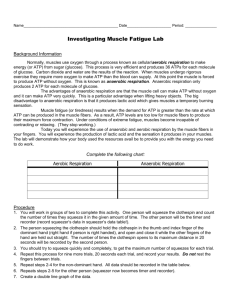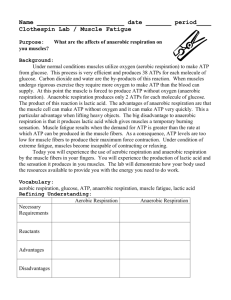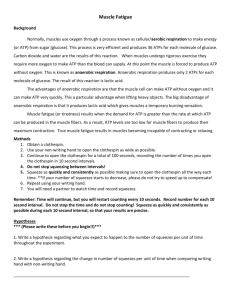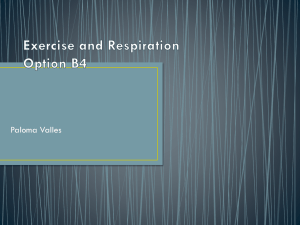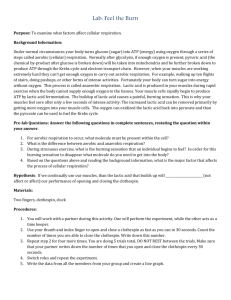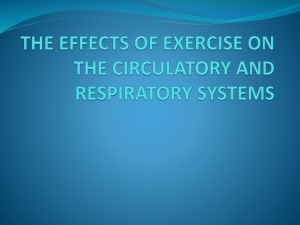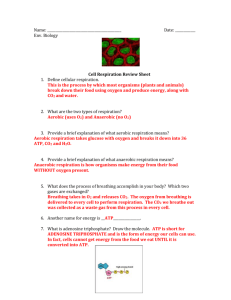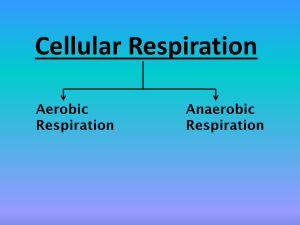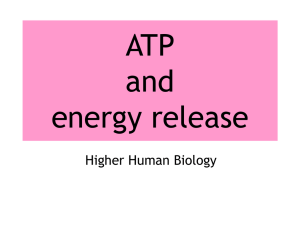Clothespins & “Muscle Fatigue”
advertisement
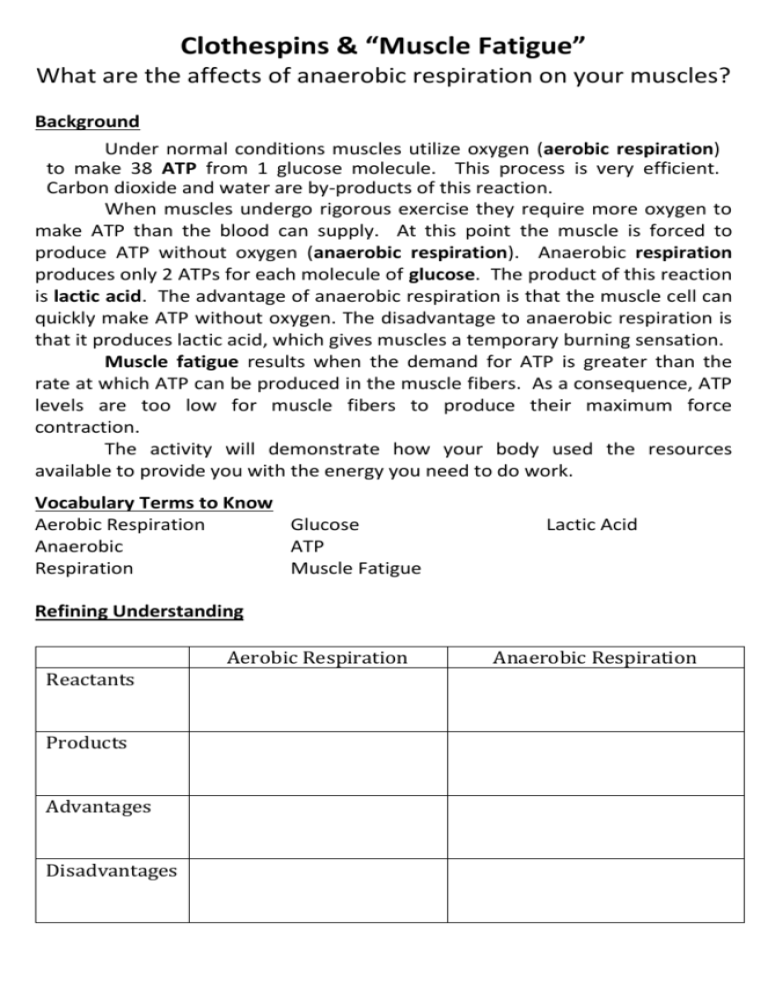
Clothespins & “Muscle Fatigue” What are the affects of anaerobic respiration on your muscles? Background Under normal conditions muscles utilize oxygen (aerobic respiration) to make 38 ATP from 1 glucose molecule. This process is very efficient. Carbon dioxide and water are by-products of this reaction. When muscles undergo rigorous exercise they require more oxygen to make ATP than the blood can supply. At this point the muscle is forced to produce ATP without oxygen (anaerobic respiration). Anaerobic respiration produces only 2 ATPs for each molecule of glucose. The product of this reaction is lactic acid. The advantage of anaerobic respiration is that the muscle cell can quickly make ATP without oxygen. The disadvantage to anaerobic respiration is that it produces lactic acid, which gives muscles a temporary burning sensation. Muscle fatigue results when the demand for ATP is greater than the rate at which ATP can be produced in the muscle fibers. As a consequence, ATP levels are too low for muscle fibers to produce their maximum force contraction. The activity will demonstrate how your body used the resources available to provide you with the energy you need to do work. Vocabulary Terms to Know Aerobic Respiration Glucose Anaerobic ATP Respiration Muscle Fatigue Lactic Acid Refining Understanding Aerobic Respiration Reactants Products Advantages Disadvantages Anaerobic Respiration Procedure: 1) Write a hypothesis for this experiment in your lab notebook using the If…. than….because format. 2) Create a data table in your lab notebook. We will be doing six (30 second) trials with each hand. 3) Hold the clothespin straight out, between the thumb and forefinger of your non-writing hand. The rest of your fingers should be closed like a fist. 4) When your teacher says “Go”, start squeezing the clothespin as many times as possible within the thirty second interval. 5) Keep a count of the number of times you have closed the clothespin and write the number down in the data table. 6) Graph the data for each hand in your lab notebook. Conclusion/Discussion Questions (answer the following questions in your lab notebook). 1) How do your results compare to your hypothesis? 2) At approximately what time in each trial did you start to feel the “burn” from the lactic acid build-up? 3) How do the data and graph illustrate the information you recorded in the “refining understanding” table? Clothespins & “Muscle Fatigue” What are the affects of anaerobic respiration on your muscles? I. Background Under normal conditions muscles utilize oxygen (aerobic respiration) to make 38 ATP from 1 glucose molecule. This process is very efficient. Carbon dioxide and water are by-products of this reaction. When muscles undergo rigorous exercise they require more oxygen to make ATP than the blood can supply. At this point the muscle is forced to produce ATP without oxygen (anaerobic respiration). Anaerobic respiration produces only 2 ATPs for each molecule of glucose. The product of this reaction is lactic acid. The advantage of anaerobic respiration is that the muscle cell can quickly make ATP without oxygen. The disadvantage to anaerobic respiration is that it produces lactic acid, which gives muscles a temporary burning sensation. Muscle fatigue results when the demand for ATP is greater than the rate at which ATP can be produced in the muscle fibers. As a consequence, ATP levels are too low for muscle fibers to produce their maximum force contraction. The activity will demonstrate how your body used the resources available to provide you with the energy you need to do work. II. Vocabulary Terms to Know Aerobic Respiration Glucose Anaerobic ATP Respiration Muscle Fatigue Lactic Acid III. Refining Understanding Aerobic Respiration Reactants Products Advantages Disadvantages Anaerobic Respiration IV Procedure: 7) Write a hypothesis for this experiment in your lab notebook using the If…. than….because format. 8) Create a data table in your lab notebook. We will be doing six (30 second) trials with each hand. 9) Hold the clothespin straight out, between the thumb and forefinger of your non-writing hand. The rest of your fingers should be closed like a fist. 10) When your teacher says “Go”, start squeezing the clothespin as many times as possible within the thirty second interval. 11) Keep a count of the number of times you have closed the clothespin and write the number down in the data table. 12) Graph the data for each hand in your lab notebook. V. Conclusion/Discussion Questions (answer the following questions in your lab notebook). 4) How do your results compare to your hypothesis? 5) At approximately what time in each trial did you start to feel the “burn” from the lactic acid build-up? 6) How do the data and graph illustrate the information you recorded in the III. Refining Understanding.
